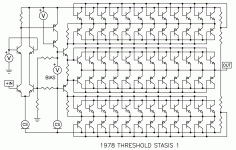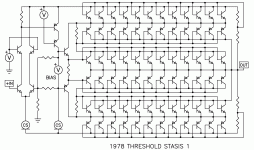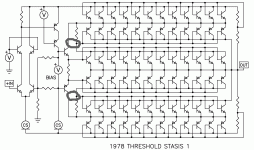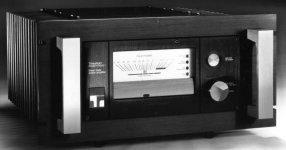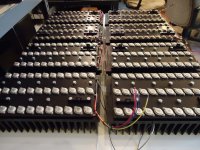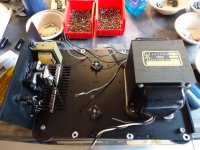Yes, the F4 and other source-follower amps preceded with suitable gain stages are candidates for damping factor control using positive feedback without global negative feedback.
The F5, F6, and F7 are not candidates, since they have common-source output stages.
Here is an example for a source-follower output stage: The FirstWatt F4 specifications show Rint=0.2 Ohms. If we choose Rsen=Rint, and CLG=5 (closed-loop gain of the combined front-end gain stage and the F4 with positive feedback), we get the required gain of the front-end gain-stage to be A=7, and Rfpb = 2.5*R1.
Thanks lhquam for your creative work.
Hello lhquam. Your idea suggests that a STASIS power amp is amenable to use positive current feedback. It does not use overall negative feedback, and its power output stage is complementary common collector. The damping factor of 80 [e.g for S/150] may then be further increased.
Hello lhquam. Your idea suggests that a STASIS power amp is amenable to use positive current feedback. It does not use overall negative feedback, and its power output stage is complementary common collector. The damping factor of 80 [e.g for S/150] may then be further increased.
I found a schematic for a STASIS-1, but I haven't spent enough time studying the circuit to fully understand the output stage. It actually appears to be a common-emitter BJT output stage, not common-collector.
Looking more at the STASIS-1 schematic http://www.schematicsunlimited.com/t/threshold/threshold-stasis-1-power-amplifier-schematic I really do not understand the output stage and cannot comment on how it might behave with positive feedback.
Looking more at the STASIS-1 schematic threshold stasis 1 power amplifier schematic Download page :: Schematics Unlimited I really do not understand the output stage and cannot comment on how it might behave with positive feedback.
It's a giant cascoded CFP. A distinguishing element is that the driver transistors are a full output stage in themselves, and can drive the load directly.
😎
without even looking at previous post etc, that sounds a lot like quads current dumping.
I referred to it that way, but I got lots of static from Lipshitz and Vanderkoy
about it not really be feed-forward.
I don't see their point, but perhaps they are using some official or proprietary
definition of feed-forward that I have overlooked.
Here is the simplified schematic for your entertainment.
😎
Attachments
Oh yeah, two resistors!
And connection points on horizontal row four....
Rest for somebody else....🙂)
And connection points on horizontal row four....
Rest for somebody else....🙂)
Last edited:
Mr. Len Feldman reviewed SA/1 STASIS power amp in Audio/Jan 1987; pp 68-74. It has a damping factor of 500.
I have a pic of this beautifully crafted amp from the review which I'm unable to upload; citing a missing security marker.
I have a pic of this beautifully crafted amp from the review which I'm unable to upload; citing a missing security marker.
Since we are strolling down off-topic memory lane,
Here is a photo, and also a couple of photos of four Stasis 1's being restored
in my shop. You can see the output stages and the stripped down power
supply part of the chassis.
😎
Here is a photo, and also a couple of photos of four Stasis 1's being restored
in my shop. You can see the output stages and the stripped down power
supply part of the chassis.
😎
Attachments
- Home
- Amplifiers
- Pass Labs
- First Watt F7 review

